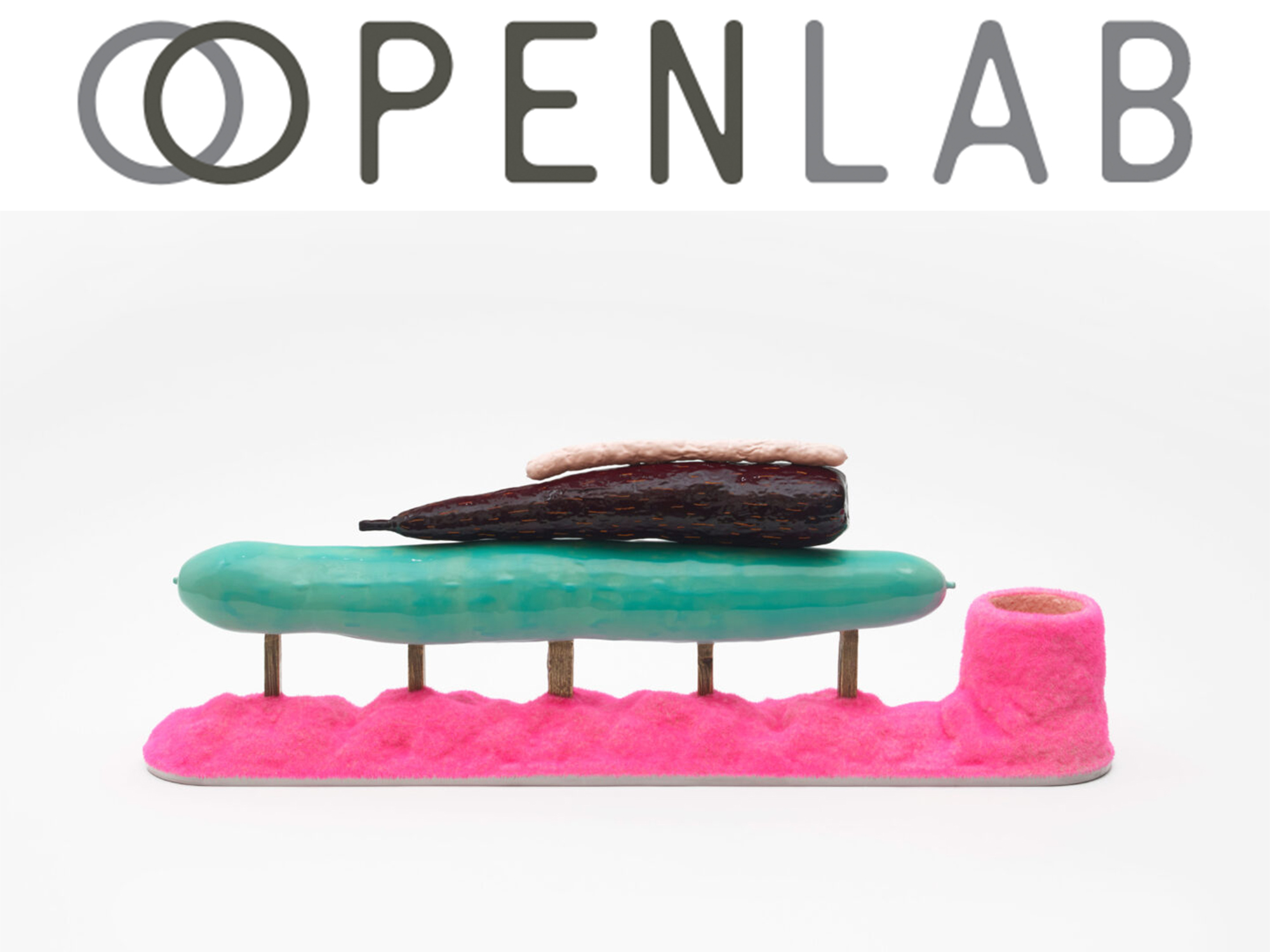By Kate Neave
Artist Jonathan Trayte invites OpenLab into his candy-coloured fantasy world. Trayte’s studio is a space where colourful casts of oversized vegetables jostle for attention with eccentric pieces of furniture. His work is inspired by disparate interests that include consumer culture, natural phenomenon, travel and colour theory each of which feed into his creations. Exploiting a tension between the natural and artificial, the seductive and the repulsive, these vibrant sculptures and design objects explore our contemporary relationship with the natural world. In this chat Trayte helps us make sense of this beautiful chaos.
ON HIS SOURCES OF INSPIRATION
The natural world is my greatest inspiration. There is nothing more rewarding than taking a walk and seeing how a wind-swept bush is growing on the side of a sea wall, or seeing algae coalescing in a puddle. I do feel that we are all part of the same thing and that the concept of us being separate from nature is an illusion. Even the plastic that we produce and lose in the oceans is all a part of it, our unfortunate legacy as a species.
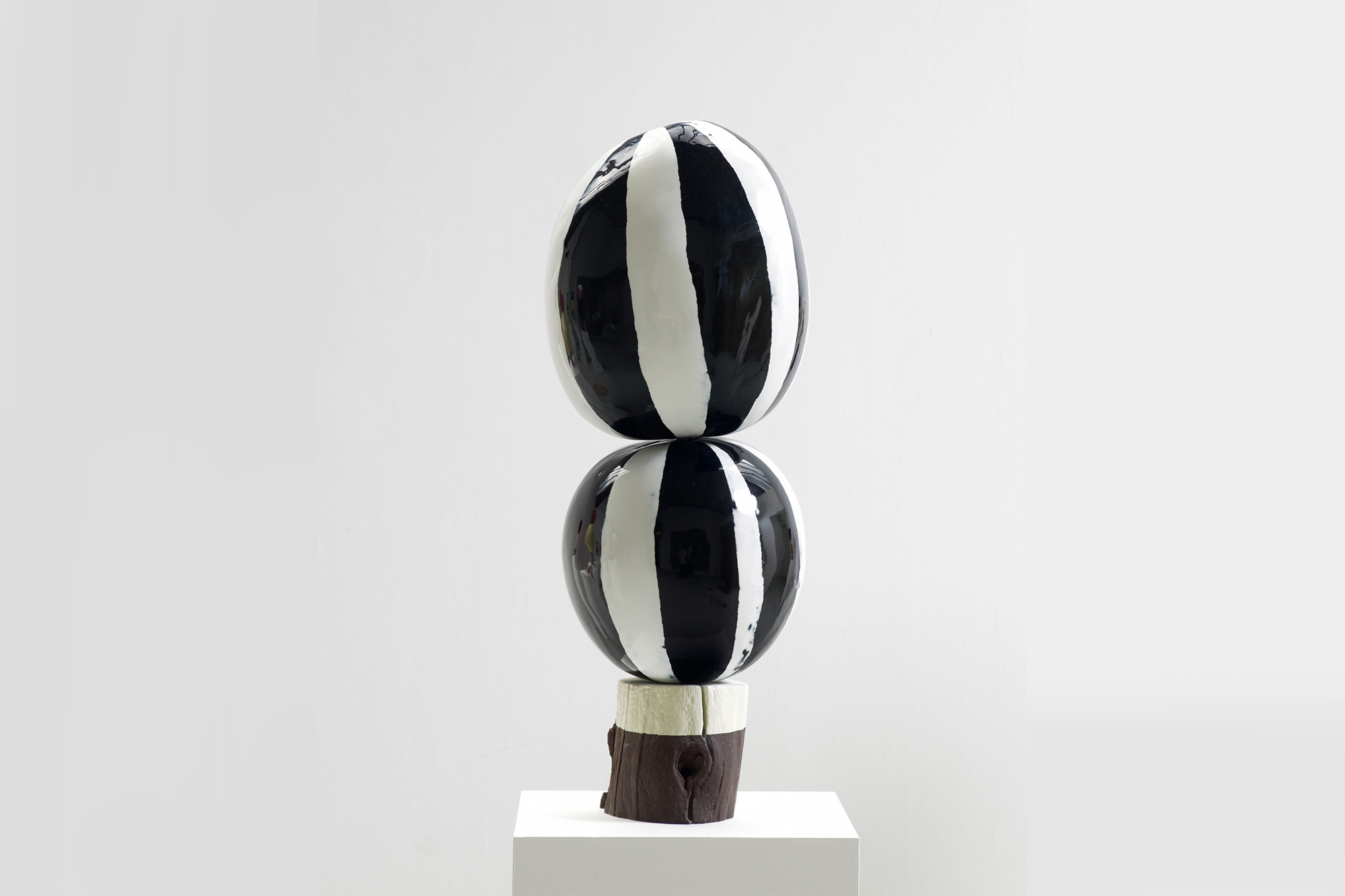
ON TRAVEL
When I was a kid we lived in South Africa and we used to travel around all the time, exploring the country in a mint blue VW Campervan. I don’t remember a lot of detail but the experience has informed who I am. It’s fuelled a desire to travel. I’ve cycled the width of Spain, the French Alps back-to-front and the whole of Iceland. I’ve done various road trips including 2000 miles through the West of the USA. I don’t feel that we really own the work that we make, it’s all influenced from the world around us. Either from the things we see day to day, from the history of art and design or from our peers too. It’s for this reason that I tend to borrow titles, from geographical features or place names that I have stopped at whilst on the road.
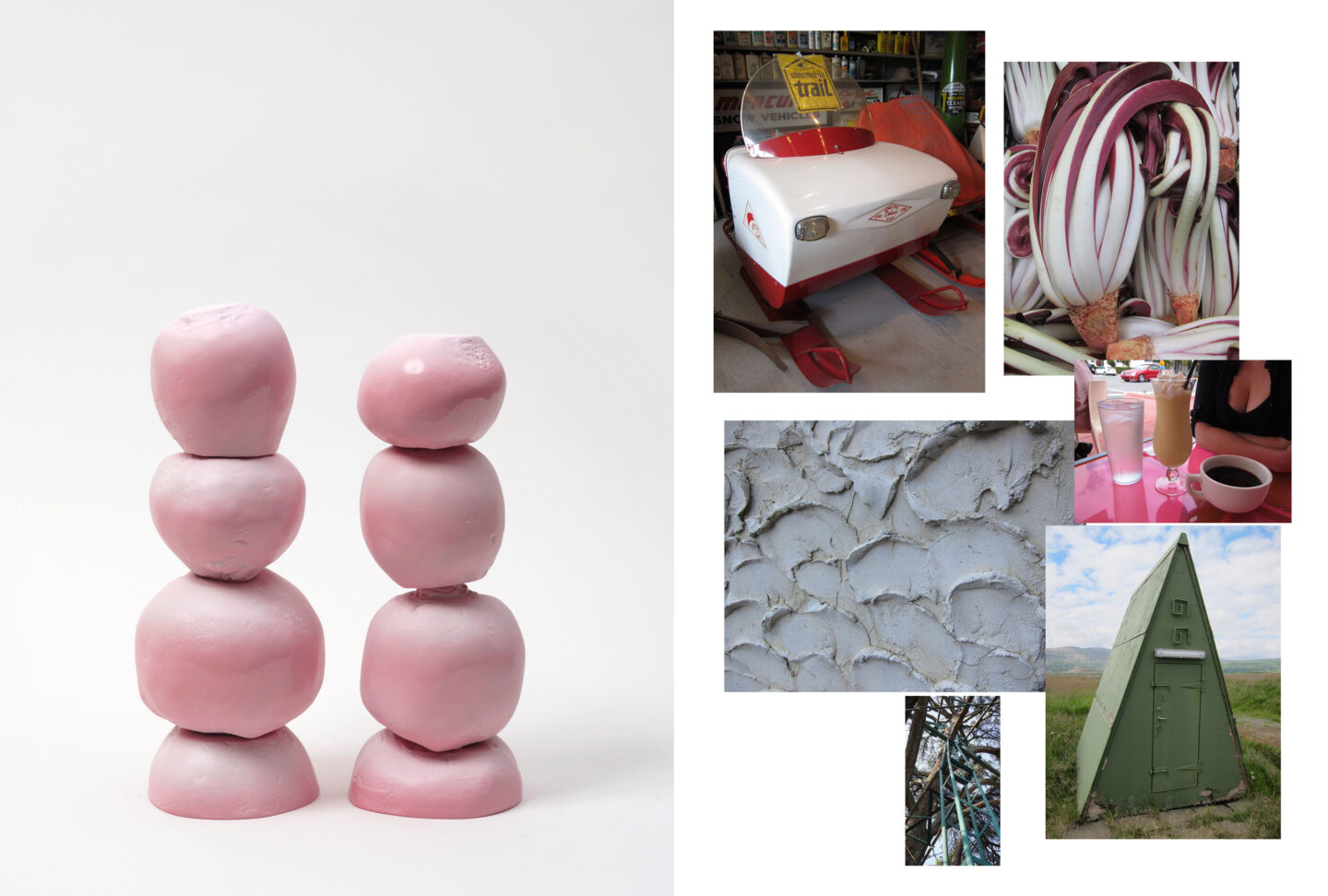
ON BROWSING THE SUPERMARKET AISLES
When I travel I love the landscapes, but I’m also drawn to those subtle cultural nuances that are regionally specific, from country to country. I often spend hours in foreign supermarkets inspecting the food packaging. For me it is important that the colours and motifs in my work are borrowed too and I take them from the packaging that I collect. Everything in our environment goes into informing the work, whether it be a wonky, sun-drenched tree, or a drinks carton that I found in Andorra and stuffed in my bicycle pannier.
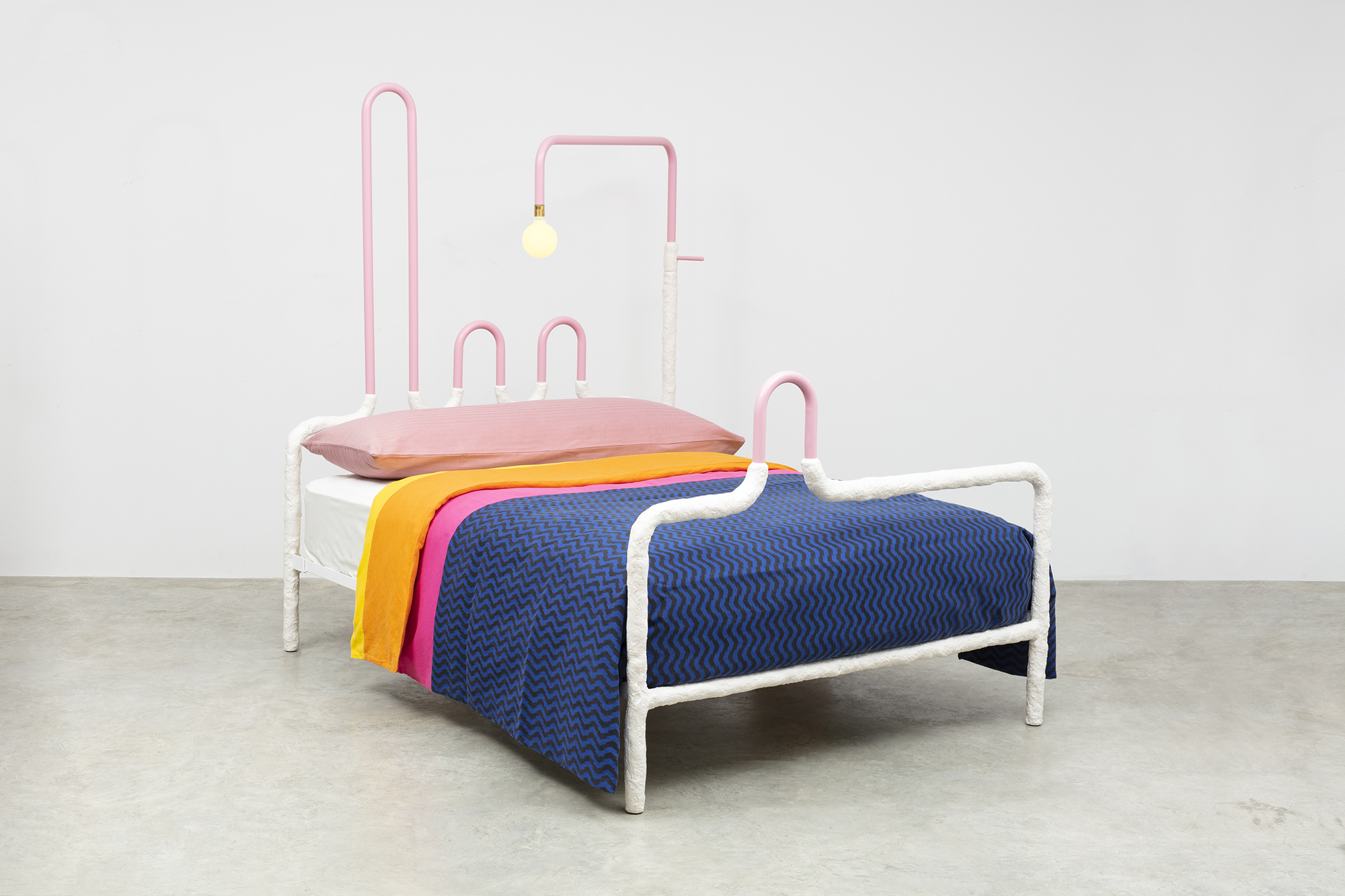
ON THE PSYCHOLOGY OF COLOUR
I’ve never studied visual communication and the psychology of design, but I did meet Charles Spence who runs an experimental psychology department at the University of Cambridge. We talked about how colour is used to inform decision-making. Making a choice is an emotional response because it relies on an impulse. You have to take a leap to make a selection, either from brand to brand or even in which specific bottle or jar that you reach for. I find it really interesting how products are designed and displayed to encourage you to make these emotional decisions and sway you one way or another.
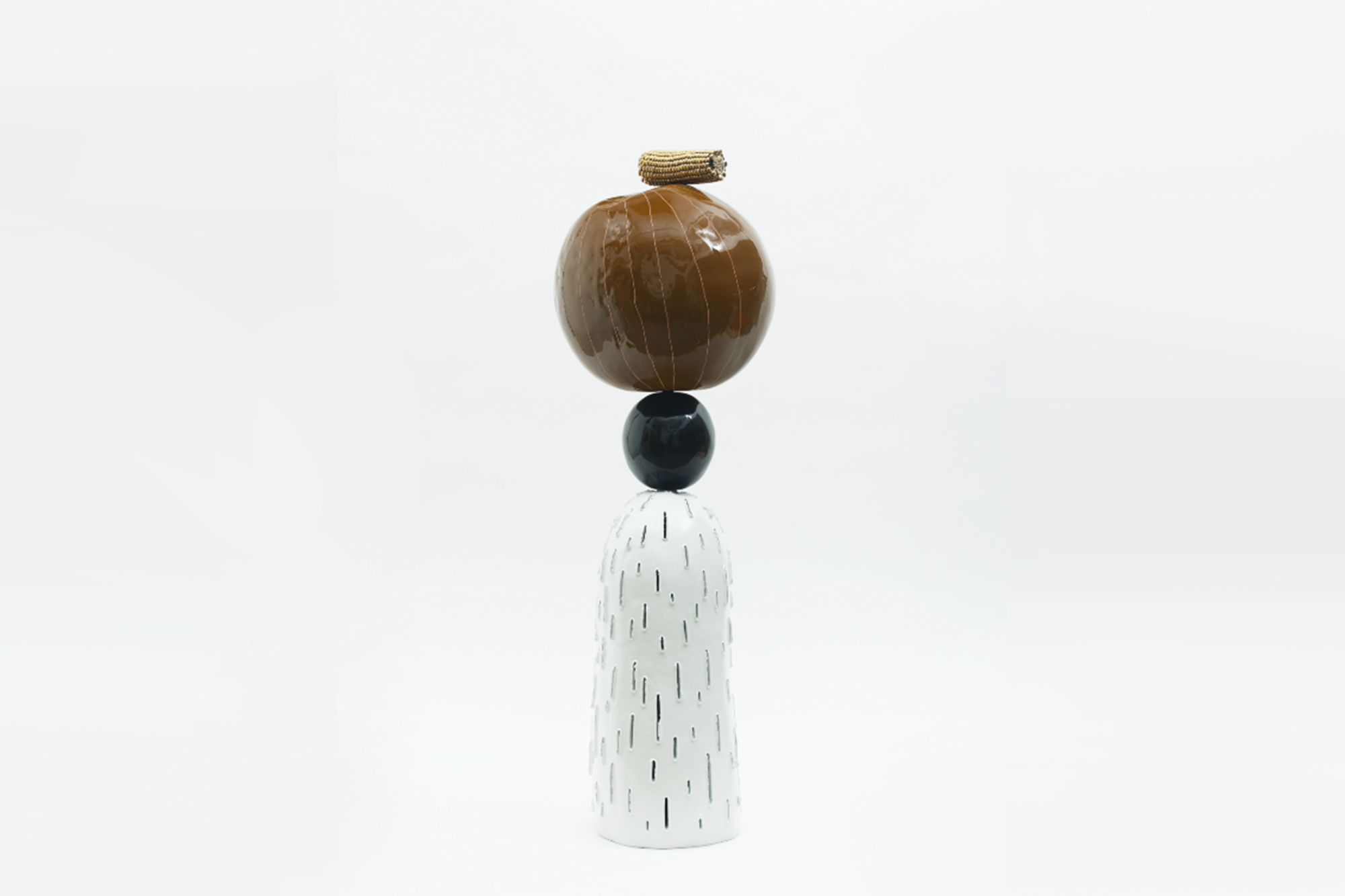
ON ‘THE SHOPPERS GUIDE’
The ‘Shoppers Guide’ exhibition was an opportunity to throw caution to the wind and try anything. The title refers to an old almanac in the States that chronicled products over time as a way to check values for consumers. I was throwing everything I could into the exhibition, filling the space with painted bronze sculptures, cast ceramics, concrete gourds and weird display units. It came together as an installation with vivid wallpapers and live tree ferns.
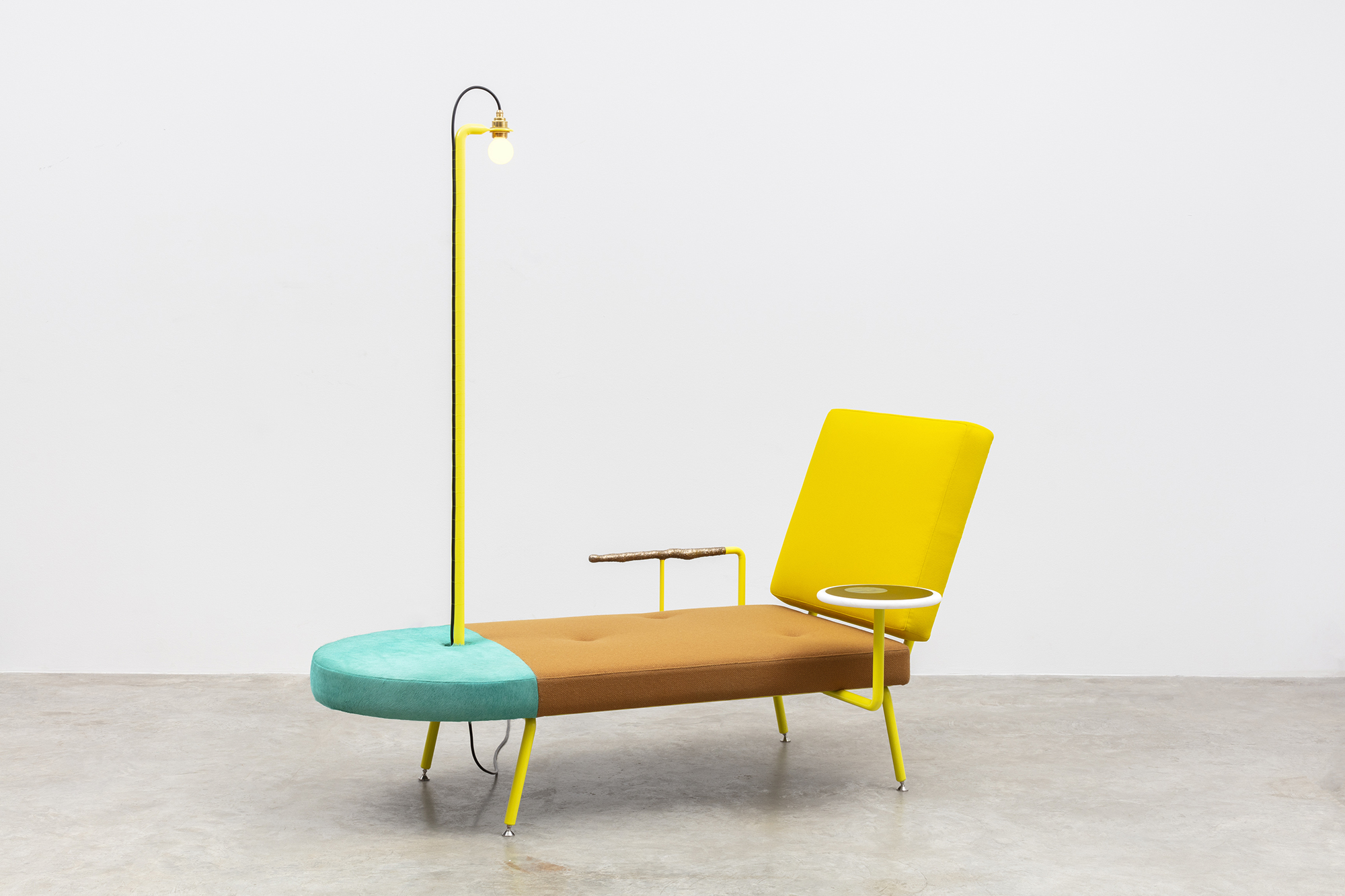
ON FOOD
For three years I worked as a chef to support myself whilst studying. I learnt so much about materials in the kitchen and about how to handle them. Working as part of a team and with intense heat and pressure. We experimented all of the time, sourcing ingredients from nearby and even going to the abattoir for buckets of warm pigs blood. It led to an interest in how things are grown and how we manipulate the world around us for our own benefit. The giant vegetables I make are casts of real objects that have been painstakingly grown from seed. I spend hours at farmers markets and prize fairs, hunting for specimens. Everything that becomes an artwork starts life in the real world, even the wild colourful hair-on-hides that I use for upholstery are leftovers for the meat and dairy industry.
ON DESIGN
Two years ago I made an ambitious outdoor installation with seating for a commission in Bishopsgate, London. The design world is closely related to art in many ways, but it’s also refreshingly different too. I see functionality from an artist’s perspective and it’s liberating, rather than being a hindrance. I think there is an unspoken rule as an artist that you can’t seek a commercial endeavour, or make something that is useful. But for me it’s really working and I take great pleasure in it. I’m constructing pieces for private collections and I love the challenge of making something that functions as well as having a conceptual basis and visual element.
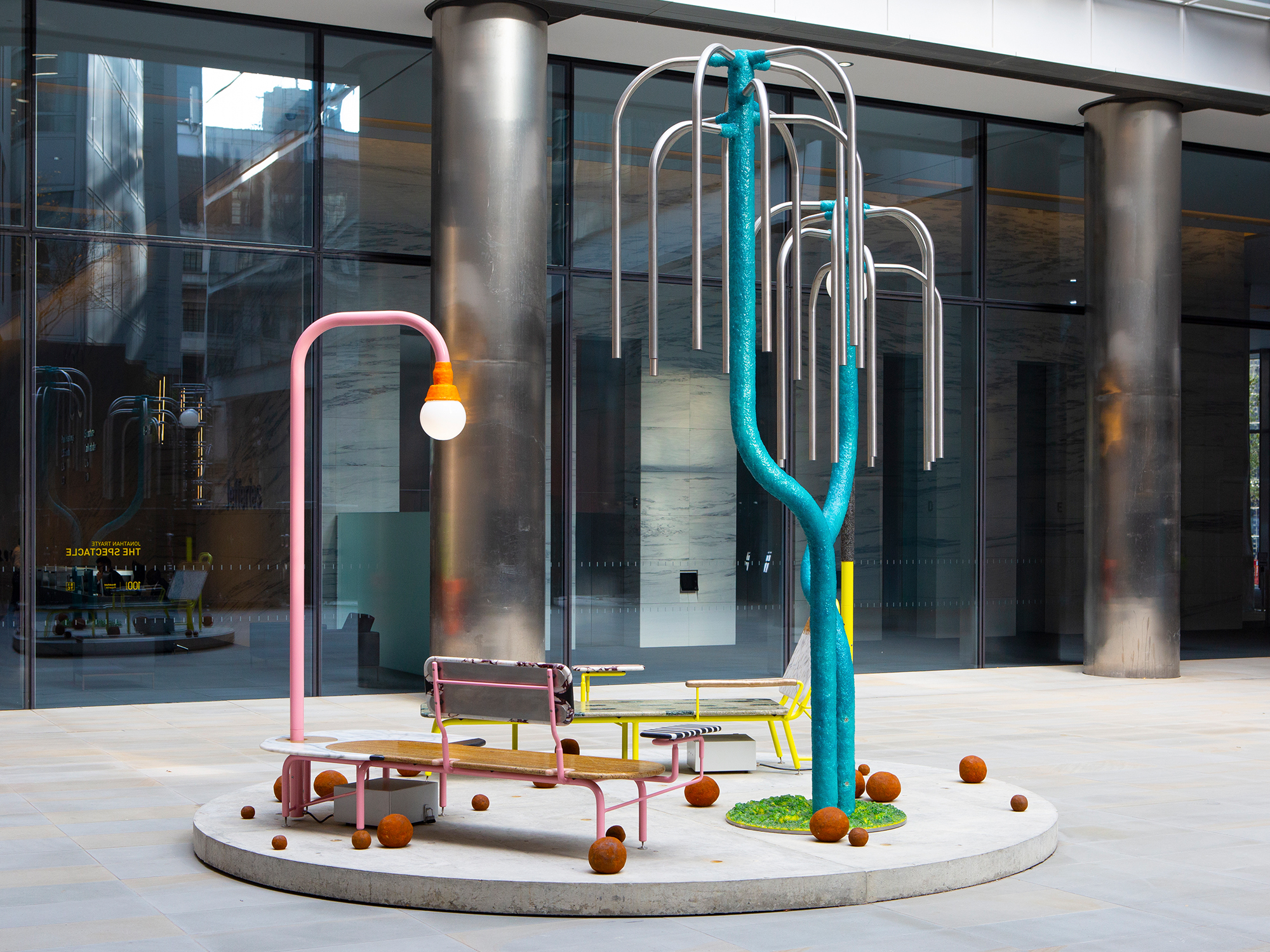
Jonathan Trayte is represented by Friedman Benda in New York.
This feature is part of ‘Unearthed: Eco-visionaries’ a thought-provoking series by Kate Neave uncovering contemporary artists at the forefront of environmental thought. We discover artists that engage with the natural world, explore topics at the frontier of art and nature or shed light on an environmental issue. Taking inspiration from these creative practitioners, we join the complex conversation about the climate crisis, harnessing creativity’s power to reach a deeper understanding and be a catalyst for change.
